Best things to see and do along the Regent’s Canal
We feel very lucky to live so close to the historic Regent’s Canal which on its East end has a great variety of things to eat, buy, do and see.
Urban canals are microcosms of their cities. They offer an alternate perspective on the material that makes a metropolis: its people, housing and businesses. Regent’s Canal is no different. Once the industrial hub of London that transported goods such as fuel and building materials, it is now a space where recreation produces a buzz of human life against a backdrop of nature.
Regent’s Canal is almost 14 kilometres long and forms a link between East and West London. The canal stretches from Little Venice, near the Paddington Basin all the way across London to the Limehouse Basin where it meets the Limehouse Cut. From here, it eventually ends up joining the River Thames.
Down our end of the canal, you’ll find its pathway to be ideal for a meditative walk or a run if you feel like you have the energy. Lined with vegetation, it is a place to wander down when you want a relaxing, verdant backdrop for your thoughts.
There is a sense of tranquillity along Regent’s Canal. On the edge of Victoria Park, it feels like an escape from the busy streets of Bow. You will pass canal boaters—a diverse and interesting group of people—sitting on their boats’ roofs in the warmer months, enjoying the view of the canal.
The history of Regent’s Canal
Originally, it was planned that The Regent’s Canal would connect Birmingham, the Midlands and the North Junction via the Grand Canal with the River Thames.
In 1812, architect and town planner, John Nash first suggested that the Regent’s Canal should be used to transport goods from one side of London to the other.
It was eventually finished eight years later. Along the way, the canal faced a number of setbacks including the introduction of a new lock system that wasn’t fully tested and resulted in money being wasted and locks needing to be rebuilt. There was also embezzlement of funds by the senior management of its construction. The project ran over budget by almost double.
By the 1840s, railways were in fashion and canals were out. In 1845, Regent’s Canal was bought by a group of businessmen who planned to turn it into a railway. Luckily for those of us who enjoy the canal recreationally today, this plan failed due to a lack of funds.
Things have changed significantly along the canal in the last hundred years. What was once a vehicle for the transportation of coal and other goods, today is used purely for travel and pleasure.
Victoria Park
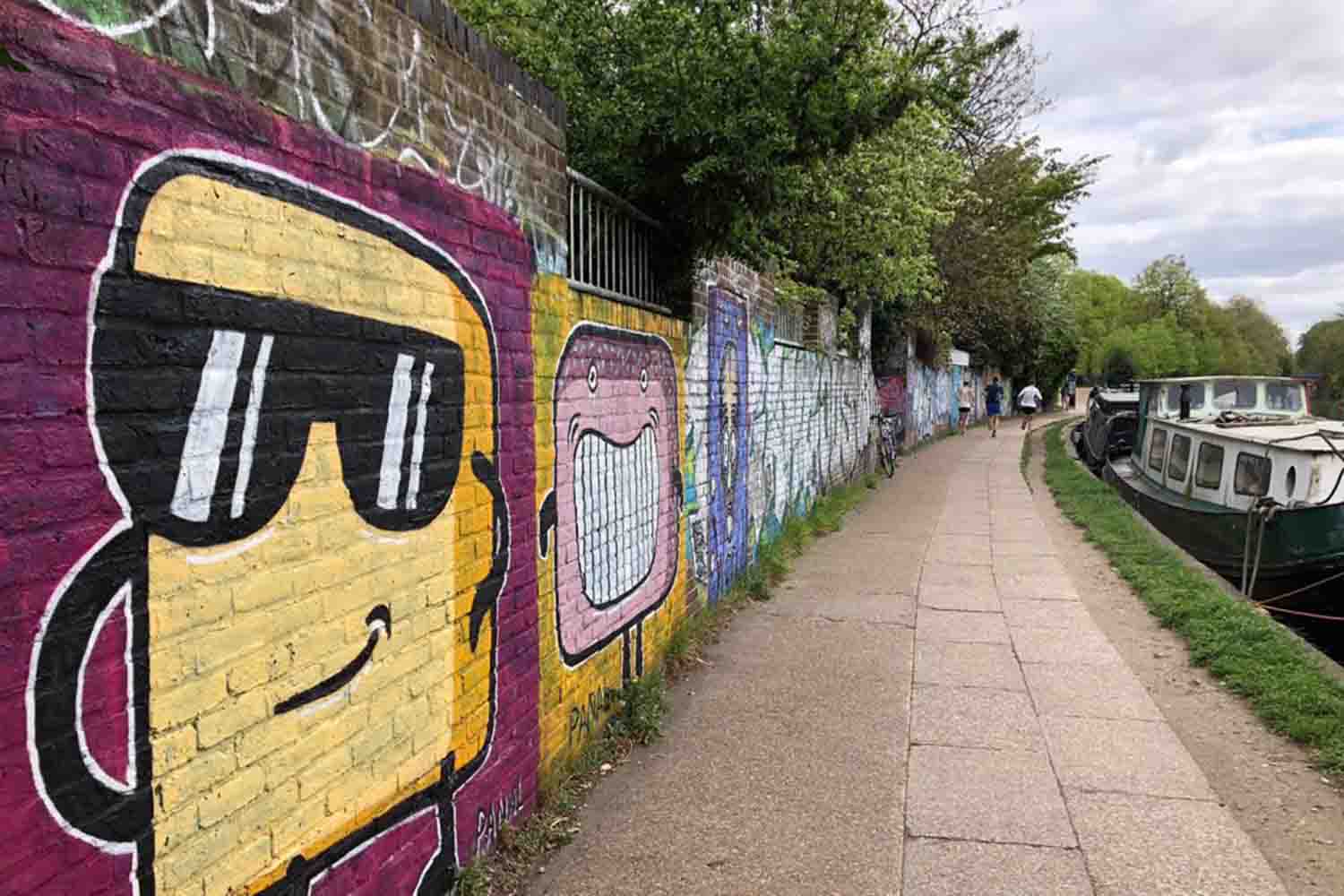
The street art and graffiti that lines the walls of Regent’s Canal in the East End holds a history of expression: of discontent and hope. There are a variety of pieces of street art ranging from tags to full paintings. This kind of ephemeral art is constantly reiterated and organically reflects the sentiments and culture of East End. Unfortunately, the artwork that enlivens the canal walls is continually threatened by the ‘regeneration’ of the area.
As you pass by Victoria Park on the canal’s pathway, you will find plenty of things to see and do. One of which is visiting the Chinese Pagoda. This structure is a reproduction of a similar pagoda that used to be in Victoria Park in the Nineteenth Century. It now stands on its own island surrounded by a reflective pool of water.
If you fancy a coffee and something sweet, you can also stop in at The Pavilion Café. They have a selection of baked goods as well as some great brunch food. It’s a lovely way to enjoy the fresh air of the park without the effort of bringing a picnic.
Victoria Park Market
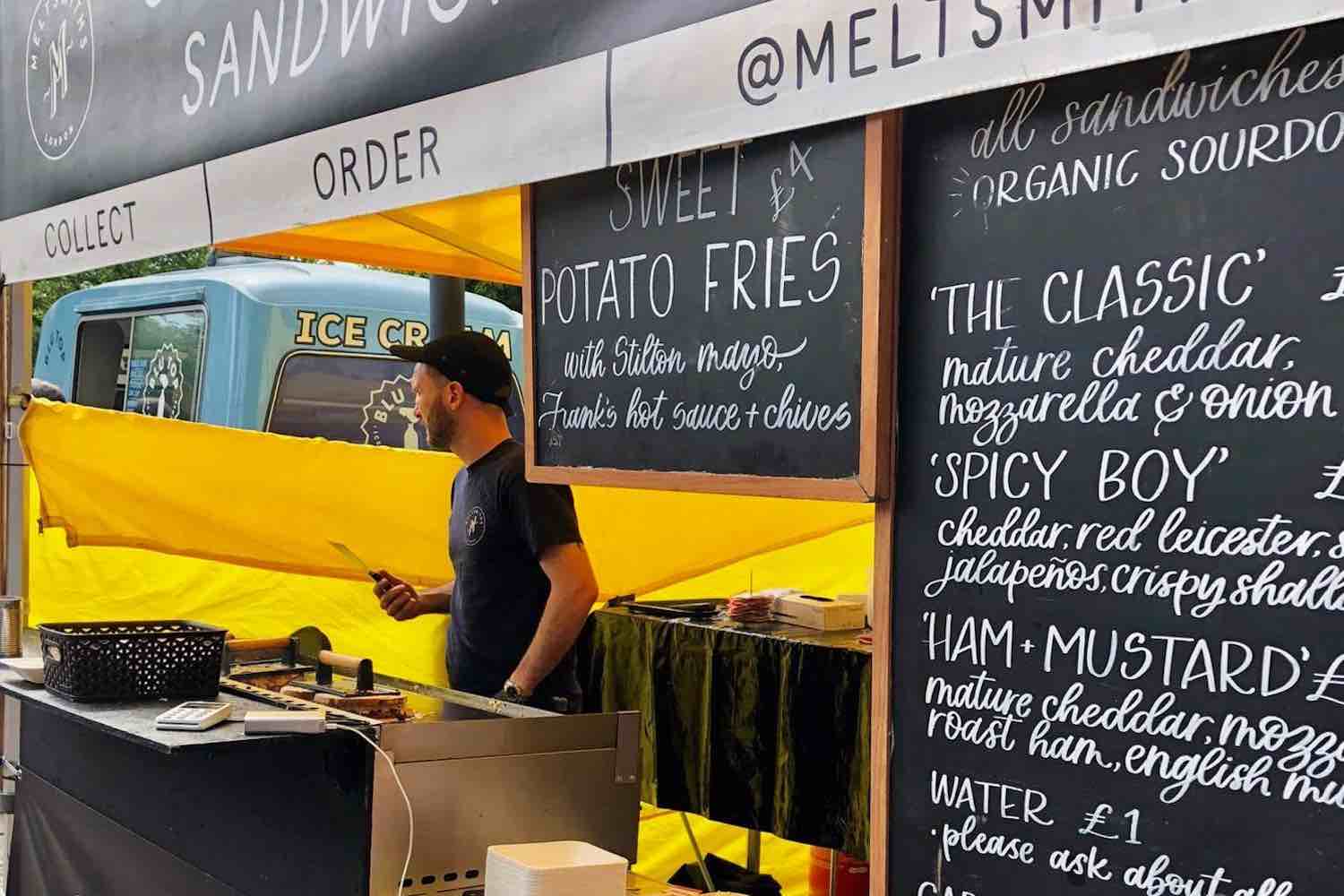
If you happen to be walking down this part of the canal on Sunday between 10 am and 4 pm, it’s a good idea to check out the Victoria Park Market. This well-loved market has all the things you don’t know you need such as charcuterie, raw honey and bone broth. It even has a doggy deli so your pup can get in on the action too.
Mile End lock keeper’s cottage
Mile End Lock spans the canal between Queen Mary University of London and Mile End Park. While you pass by this section of the canal, keep your eyes open for the lock keeper’s cottage just beside the gate. The picturesque Nineteenth Century cottage is now attached to a much more modern structure, juxtaposing the past with the present. It’s a great place to stop for a break and watch the lock gate in action, a mechanism that reminds us of the canal’s industrial origins.
The Palm Tree pub
Continue your journey east and you’ll pass the iconic pub, The Palm Tree. It was built in 1935 and is one of the few buildings that survived the heavy bombing of the area in World War Two. Now surrounded by trees in Mile End Park, its incongruity is part of its nostalgic charm. You could grab a pint in a to-go cup and continue your wander down the canal, or you could stay and enjoy their retro interior.
The Palm Tree also hosts jazz days which see the car park and garden space transformed into a hub of musical activity. You can enjoy performances from talented, aspiring and seasoned musicians.
The Ragged School Museum
Another important building that is located beside Regent’s Canal is an imposing structure that holds an interesting history. Dr Barnado’s Copperfield Road Ragged School was opened in 1877 to serve poor and malnourished children, providing a basic education along with shelter from the streets.
In 1990, a museum was set up on the premises of the former school to commemorate this history. Though currently closed to the public temporarily because of restoration, the museum is still open to school groups during term time and is due to reopen to the public this summer. They have set up a Victorian classroom and a Victorian East End kitchen from the 1900s for an interactive experience with local history.
Acme Studios
Located near The Ragged School Museum at 44 Copperfield road, and overlooking Regent’s Canal, is Acme Studios. This building is full of studios designated for those who cannot afford regular studio space. They support artists at any stage of their career by offering a space to create as well as offering award programmes.
One artist who works in Acme Studios and celebrates his local area through his art is Ed Gray. He took up residence in the building in 2008 and has since been producing works that reflect the vibrancy as well as the darkness of urban life. His paintings depict the diversity and chaos of the city and he has many works that specifically showcase the people of Mile End
Limehouse marina
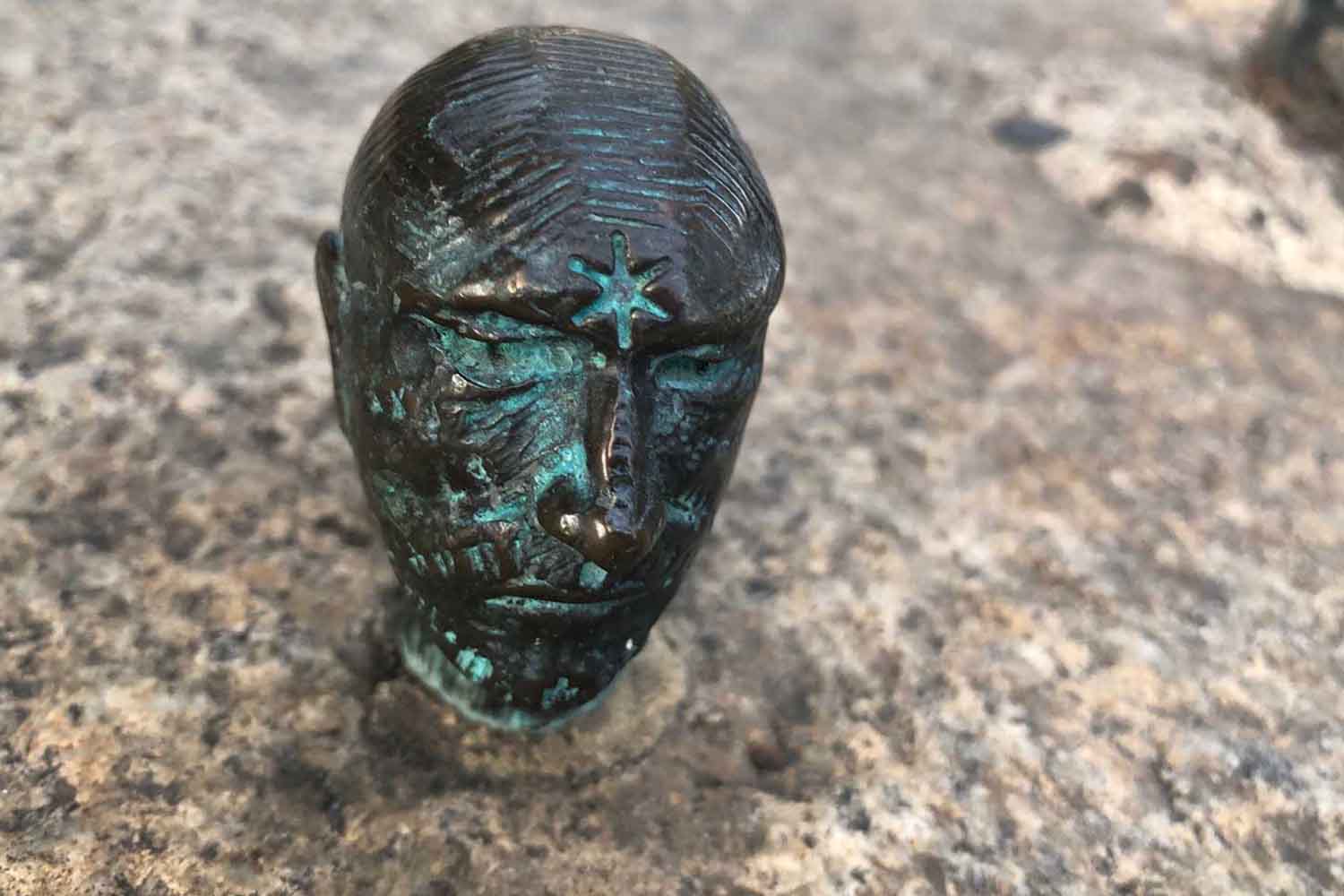
Regent’s Canal ends at Limehouse Marina. This marina was once an industrial dock that was necessary to stem the congestion on the Thames. The dock provided a place for boats transporting fuel to moor.
In the 1970s, this area was not yet gentrified. Gangs made it a very dangerous place to be after dark.
Today, however, it is lined with expensive flats and filled with houseboats as well as boats for recreational travel. You can rent a canoe from Moo Canoes and explore the water for yourself. If you fancy getting some water-based exercise while helping the environment, Moo Canoes also run a monthly session during which volunteers will pick up litter while canoeing.
The canal has transformed over the years from an important industrial network to a more enjoyable, recreational place. A walk down Regent’s Canal gives you not only a sense of London’s history but also of its diverse socio-economic realities.
Whether it’s the erasure of graffiti or the knocking down of cheap areas in favour of luxury blocks of flats, the motion of gentrification can be witnessed in action from the canal path. Wandering down Regent’s Canal offers you the time to contemplate your own life, but also to consider the varied tensions in the place where you live, and where you fit into the diversity of the East End.
If you liked this, you might enjoy Victoria Park: the people’s park of East London

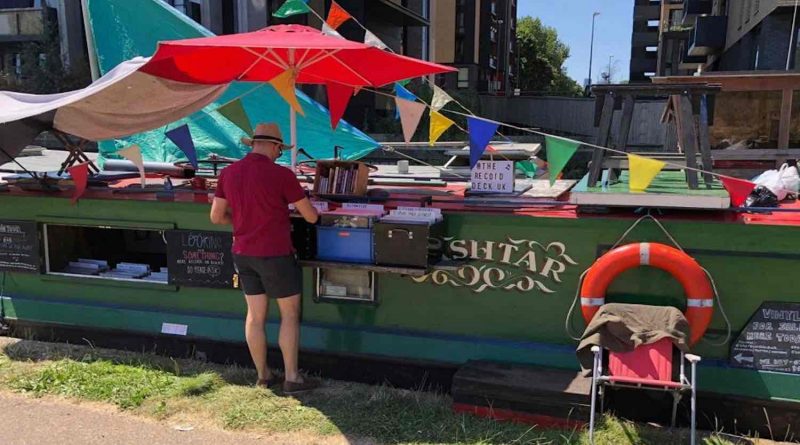
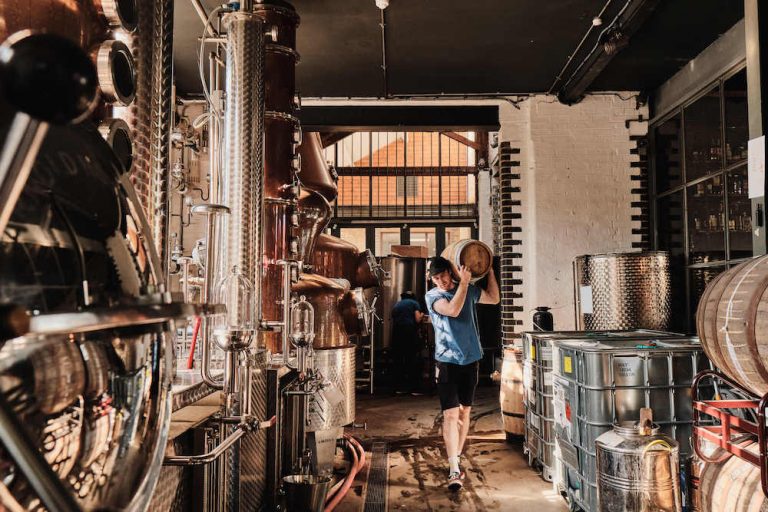
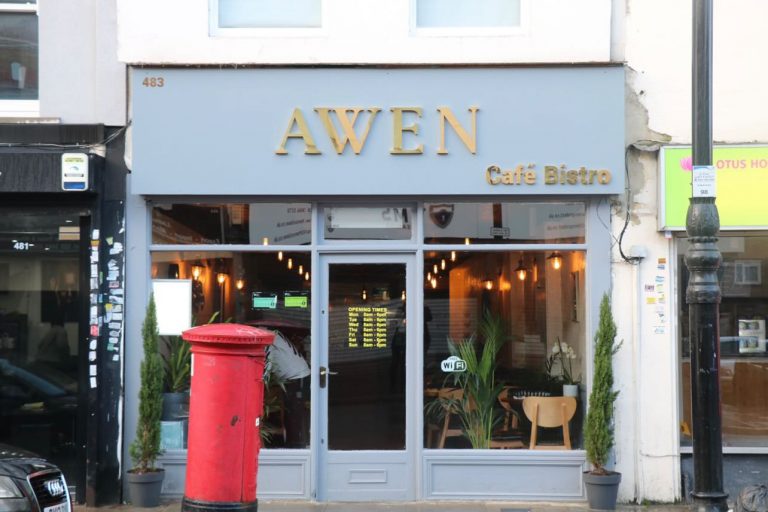
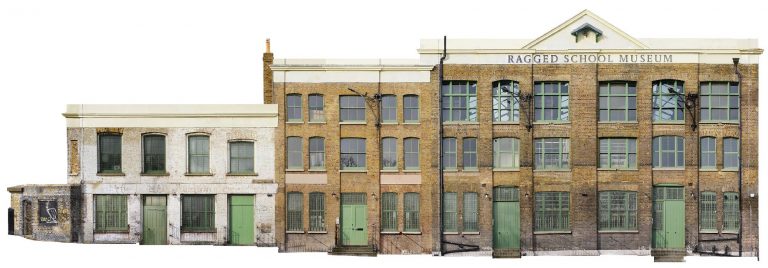

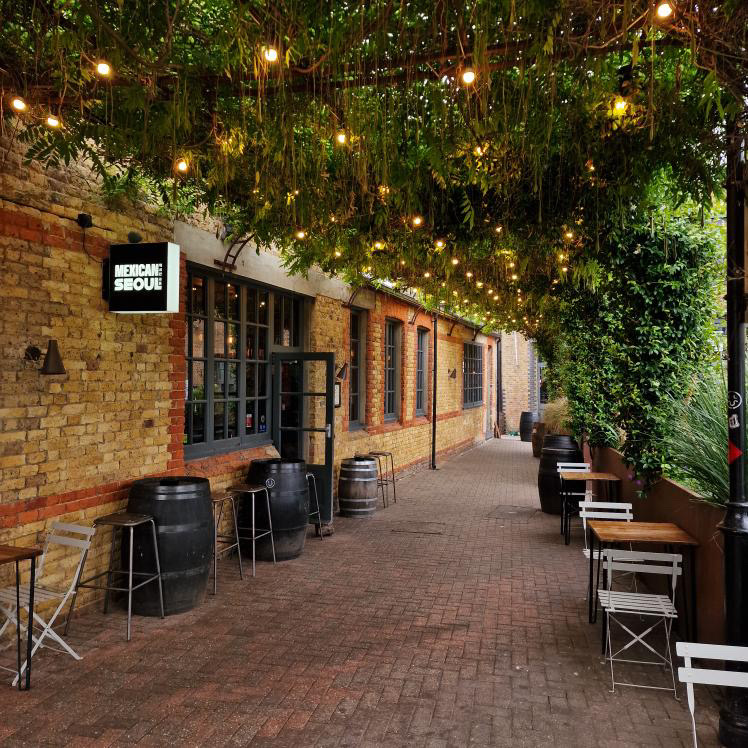
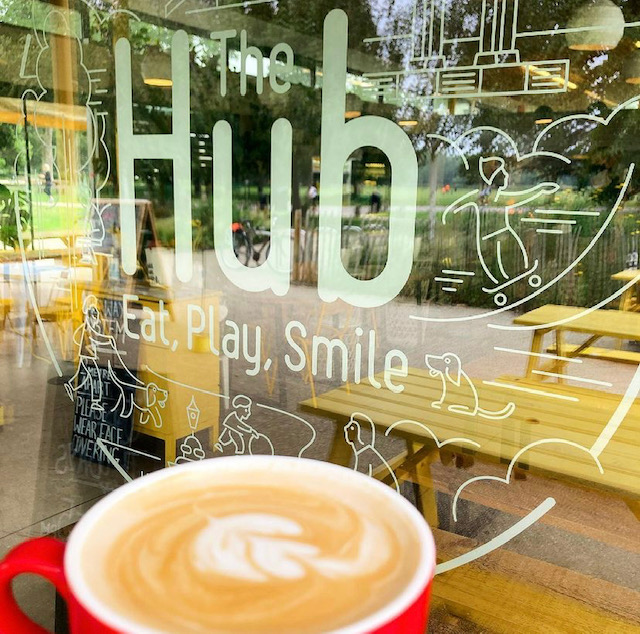
Whilst it may conjure up a lovely romantic image of all but the Palm Tree being “taken out” by the Luftwaffe, the reality is that, although there was bomb damage in the area, the surrounding housing was flattened mostly by the LCC/GLC as part of the 1970’s slum clearance program. ie “the Council knocked them down”.
The “industrial chimney” by the canal at Kirk’s place is actually a listed [and living] sewer vent owned by Thames Water. It vents the sewer that travels all the way from Ravenscourt Park in West London to Abbey Mills and was built some 30 years after Joseph Bazelgette’s enormous sewer building program.
I have people trying to tell me about the lock keepers houses between Mile end rd and Roman rd, I tell them that they did not work the locks.The lock keepers houses for the canal were on the tow path side of the canal ?….P